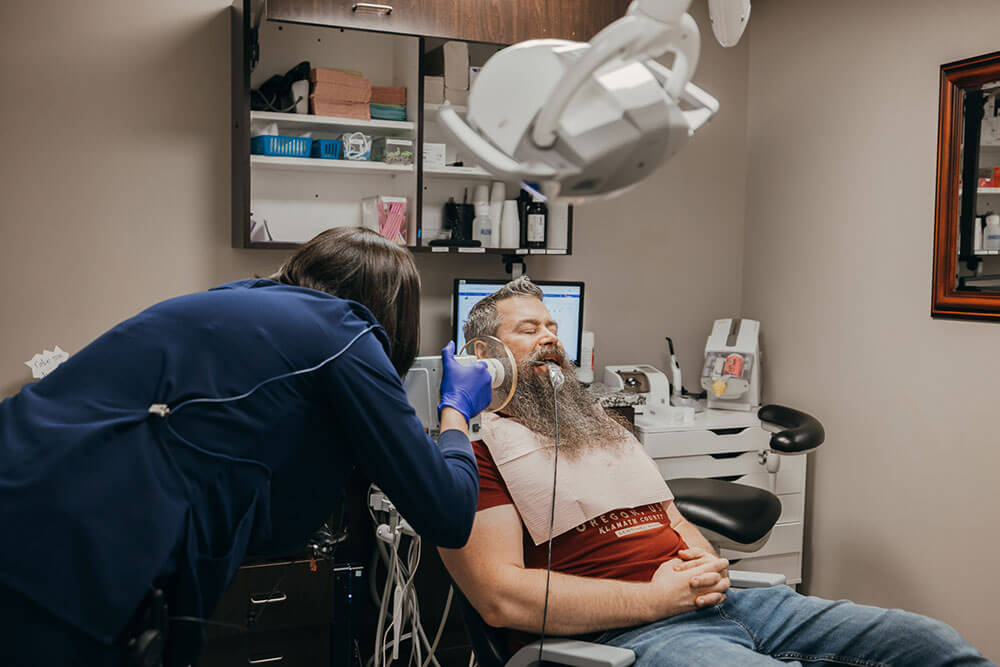Check-Ups & Cleaning
Regular checkups and cleanings are vital for the whole family for spotting oral health issues before they become severe, painful, and expensive to prepare. Scheduling a checkup and routine cleaning every six months can help prevent these oral health issues and check for overall health issues that can manifest in the mouth.
At Dental & Aesthetics of Pittsburgh Dental Aesthetics, we stress to our patients the importance of continues care. Our experienced staff of dentists and dental hygienists use checkups as a way to get a comprehensive look at the oral health of a patient. Using these checkups, Dental & Aesthetics of Pittsburgh will formulate a holistic approach to your dental care to ensure the best possible care.
Whether you’re a new patient at Dental & Aesthetics of Pittsburgh or have been trusting us with your dental care for years, you can expect to be greeted during every checkup with a warm smile and genuine interest in advancing your oral health care.
Fillings
Fillings are used to repair minimal tooth fractures, tooth decay, or surface damaged teeth. As a common solution for cavities that occur from poor brushing habits and high sugar intake, fillings are a common oral health solution among children.
Fillings can also be used to even out tooth surfaces for better biting or chewing. Individuals with enamel loss resulting in tooth sensitivity will notice a significant improvement or complete elimination of sensitivity once with fillings, making it easier to enjoy and show off your smile every day.
At Dental & Aesthetics of Pittsburgh, we use white composite fillings. White composite fillings provide strong durability and resistance to fracture in small to mid-size fillings. These fillings not only look natural, but are able to withstand moderate pressure from the constant stress of chewing.
Crowns & Bridges
Custom solutions for unsightly teeth and smile insecurities.
What are dental crowns?
A dental crown is a tooth-shaped cap placed over an existing tooth that restores the function and appearances of an otherwise unhealthy or unsightly tooth. As a solution that provides improved appearance and strength to your smile, dental crowns are a popular choice for people of all ages looking to create a beautiful smile.
At Dental & Aesthetics of Pittsburgh, we use dental crowns as a solution in the following applications:
- Protect a weak tooth
- Restore an already broken tooth
- Hold a dental bridge in place
- Cover a dental implant
- Cover misshapen or discolored teeth
What are dental bridges?
A bridge is a fixed dental prosthesis used to replace a missing tooth or teeth. On each end of the bridge is a cap placed on an adjacent tooth or implant. As a permanent solution to missing or unsightly teeth, dental bridges are a common dental solution for people of all ages.
Some benefits of dental bridges include:
- Repair your smile
- Repair your ability to properly chew and speak
- Maintain the shape of your face
- Distribute the forces in your bite properly by replacing missing teeth
- Prevent remaining teeth from shifting out of position
Dental bridges are typically made out of porcelain and are made custom to each patient’s needs. This indirect method of restoration is a perfect minimally-invasive approach to getting the smile of your dreams.
Gum Disease
Gum disease is one of the most common diseases in America, affecting nearly 65 million adults over age 30. There are two types of periodontal disease – gingivitis and periodontitis. Each refers to an accumulation of bacteria along the gum line though one is more severe than the other.
- Gingivitis – the least invasive form of a periodontal disease; features minimal symptoms, such as reddening, swelling and easy bleeding along the gum line.
- Periodontitis – the most serious form of a periodontal disease; causes the gums to recede and pull away from the teeth.
Did you know…
that in addition to being one of the most prevalent diseases in America, periodontal disease is also one of the most preventable? Proper brushing and flossing techniques can help prevent the accumulation of tartar, which harbor harmful bacteria along the gum line. According to the American Academy of Periodontology, certain lifestyle habits and systemic conditions like smoking and diabetes can also contribute to the development of periodontal disease. Talk to your periodontist or dentist about the changes you can make to reduce your chances of developing gingivitis or periodontitis.
Frequently Asked Questions
Should I seek treatment for a gum disease?
If you are experiencing any of the signs or symptoms of gum disease, seek treatment as soon as possible. Found in its earliest stages, periodontal disease is more easily treated. Left untreated, gum disease is likely to progress, requiring more invasive treatments and potentially causing total tooth loss.
What should I expect during gum disease treatment?
Your treatment experience will vary according to the stage of your disease. If gingivitis is the problem, you’ll need a thorough professional cleaning and a topical antibiotic. On the other hand, a diagnosis of periodontitis may require surgery, as well as bone or tissue grafting. Talk with your periodontist about the treatment options best for you.
Will I need to follow any special instructions following gum disease treatment?
Yes. Your post-treatment care guidelines will vary according to the type of treatment you have and may include an at-home antibiotic and special instructions for keeping the treatment site clean in the days following your procedure. You will be advised to maintain your treatment results by attending periodic dental cleanings and exams in the future – perhaps more frequently than the standard twice-yearly recommendation. You’ll also be encouraged to begin flossing and using a mouth rinse daily once you have recovered from your periodontal treatment.
Tooth Extractions
Tooth extractions are routine dental procedures used to remove decayed, damaged or otherwise problematic teeth. Dentists usually make every effort to preserve natural teeth, although sometimes an extraction is necessary. Although the procedure is performed in a dentist’s or oral surgeon’s office, it is considered surgery. Depending on which teeth are removed, they may be replaced with a dental implant or another oral prosthetic.
There are several reasons why you could need a tooth extraction.
The most common cause of tooth extractions is severe tooth decay and cavities. However, many patients also undergo extractions for impacted teeth – particularly wisdom teeth. Other causes for extraction include advanced periodontal disease, cracked teeth, and teeth that are severely malformed. Although many circumstances that require extraction are unavoidable, some could be prevented with regular visits to the dentist for exams and cleanings.
Frequently Asked Questions
Do I need a tooth extraction?
Only your dentist can tell you if you need a tooth extraction. However, you may be a candidate for the procedure if one or more of your teeth are decayed so severely that a filling or others restoration is not a possibility for treatment.
What should I expect during my tooth extraction appointment?
If you and your dentist decide to extract one or more teeth, you will be scheduled to return for oral surgery at a later date. You will be given a local anesthetic to prevent pain during the procedure, and you may be prescribed medications to help manage pain in the hours following your extraction. Depending on the nature of your extraction and other factors, such as whether your teeth are impacted, you may also be sedated or given general anesthesia during your procedure.
What type of post-treatment care will I need to follow?
Post-operative care following a tooth extraction is essential for healing and preventing complications. You will be instructed to avoid certain foods and also keep the surgical site clean at all times. If you are prescribed an antibiotic, it is important that you complete the course of treatment to prevent infection. Finally, you may be advised to avoid smoking or drinking through a straw, as doing so may delay the healing process and cause a condition known as ‘dry socket.’
Root Canals
Root canals are valuable dental procedures used to treat and preserve teeth with badly infected roots. The pulp is the live portion of the tooth that extends into the root and contains nerve endings and tissues. When it becomes infected, patients can experience pain, swelling and even total tooth loss unless treated. Root canals remove the damaged parts of the tooth and infected root. In some cases, an antibiotic is prescribed to help prevent further infection within the tooth. The organic portion of the tooth that remains may be restored using a cap or crown that provides a natural appearance and normal tooth function.
Many patients associate root canals with pain and discomfort.
But local anesthetics and advancements in modern dentistry have made root canals highly tolerable procedures that are often no less comfortable than getting a standard filling. Upon completion, a restored tooth that has undergone a root canal will blend in with surrounding teeth – virtually undetectable to the average eye. More than 9 out of 10 root canal procedures are successful, and most treatments last many years or even a lifetime.
Frequently Asked Questions
Am I a candidate for a root canal?
You could be a candidate for a root canal if decay or damage has allowed bacteria to infect the pulp inside your tooth. A root canal could also be the right treatment for you if you prefer to preserve as much of your natural tooth as possible instead of extracting both the healthy and diseased portions of your tooth. For more information about root canals and whether they are right for you, schedule a dental exam and consultation at your earliest convenience.
What should I expect during my root canal treatment?
If you decide to undergo a root canal, the first step in your procedure will involve a local anesthetic. Once your tooth root is numb, the diseased portion of your tooth pulp will be removed and potentially treated for bacterial infection. The tooth will then be sealed and filled before being restored with a crown.
What type of post-treatment care is required after a root canal?
It is normal for teeth to become inflamed after a root canal, potentially causing sensitivity for the first several days following treatment. However, normal brushing and flossing habits can be resumed immediately after treatment and restoration is complete.







